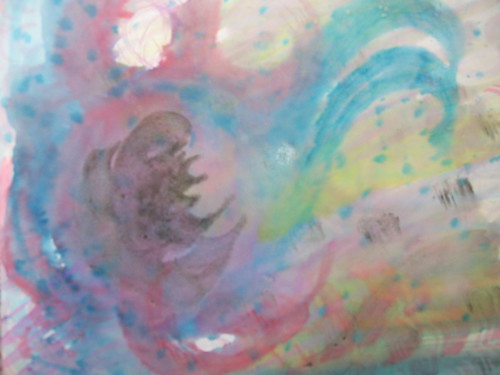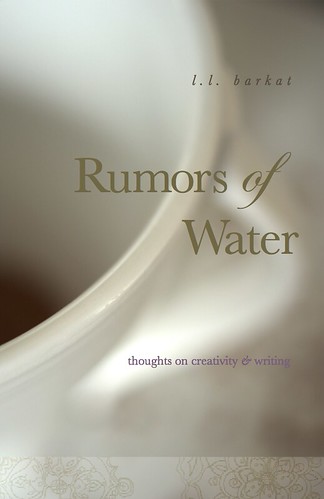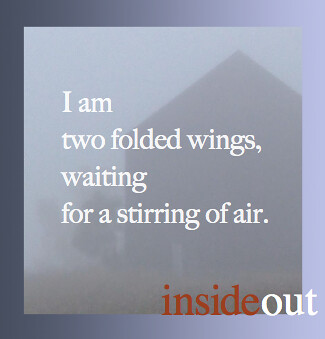31.1.07
25.1.07
Satan's Resin
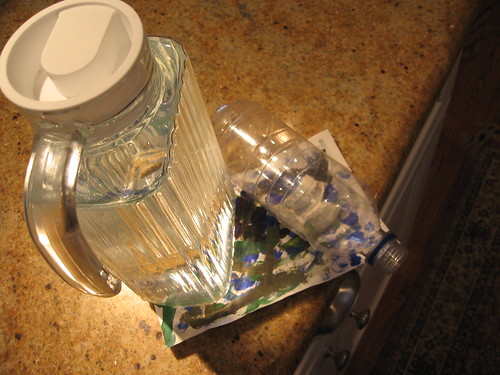
I know that we earth lovers are into recycling, and this is a noble pursuit.
But, reading Garbageland, Cradle to Cradle, and Living Downstream, (all by scientists or science journalists) I now understand our dilemma. We consumers cannot safely use plastic. There are a very few exceptions, but it takes rocket science to figure it out.
Short of reading all three books to get the scoop, you can think of it like this...
- plastic is often burned in incinerators (a big no no... let's out lots of toxins into the air)
- most plastic is not truly recyclable (even the ones we "recycle" because they have the right numbers). It is "down-cycled" and eventually gets trashed anyhow (a big no no, let's out lots of toxins into the ground water)
- many plastics are suspects in cancer development (so why are plastic water bottles still made with antimony, a heavy metal that leaches into the liquid inside?)
What to do? Here's my new glass pitcher, from Bed Bath and Beyond, for $7. I'm trying to avoid buying anything in plastic, especially liquids. I got my new glass food storage containers for Christmas, and am re-using many glass jars.
And I'm blogging about it so the plastic makers of the world can come up with a new, safer solution.
Photo by L.L. Barkat. "Satan's Resin" is a chapter title in Garbageland.
15.1.07
Mud Marvel

Mix sea mud with manure. Put it in a bucket. Add sand, water and wires. And presto! You’ve got electricity.*
This strange invention can power a laptop or a light.
How does it work? The bacteria in the sea mud eat the manure. In the process, they give off electrons. The electrons travel to the wires, which lead to an electricity storage cell.
Humans give off electrons too, when digesting. But our electrons split oxygen atoms inside our bodies. This means you and I could not easily power a laptop.
In discussing this with my family, I observed...
“See? Sometimes we think that complicated things are more impressive and important. But, in this case, the simpler organism can do an important thing that the complicated one (us) can’t.”
There’s a lesson in that somewhere. Maybe even one which could help us consider caring better for creation, in both its complexity and simplicity.
*I heard this invention discussed on NPR, on January 13, 2007.
Photo by L.L. Barkat.
8.1.07
Who Knew?

Hair on a leaf. Who knew?
But there it was under Lydia’s magnifying glass, at my daughter’s Eden Club meeting.
Why is there hair on a leaf?
We went to the library, probed for answers. Hair on a leaf tickles insects. It is a gentle armor. Hair on a leaf prevents excess evaporation.
Suddenly, our conversation got interesting. Aren’t God’s designs so amazing? We marveled. And then we considered that what God had done on a micro level, he’d done on a bigger-than-life level too…
While hair on a leaf stands up to prevent the wind from stealing moisture, trees on a landscape stand up to protect the soil from the wind’s evaporative power.
And now that we know, we can use this knowledge in our own inventions… objects perpendicular to a surface may prevent evaporation. Who knows what inventions we’ll ever use this knowledge for? But now it’s ours. We have seen a great design from the Master’s portfolio.
Photo by Saima Barkat and L.L. Barkat.
1.1.07
Miracles
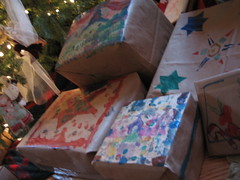
Went to see Charlotte’s Web on New Year’s Day. What a beautiful movie.
The song at the end said, “Life is just a gift, they say, wrapped up for you every day.” This captures a main theme of the film… that there are miracles all around us, in the simplest aspects of creation and in our ordinary friendships… if only we will open our eyes and see them…or, perhaps, participate in crafting those miracles through our own small acts of love.
This was a good way for me to begin the New Year… to consider what miracles drift through every moment, or could.
Hand-Designed Wrapping Paper photo, by L.L. Barkat.
